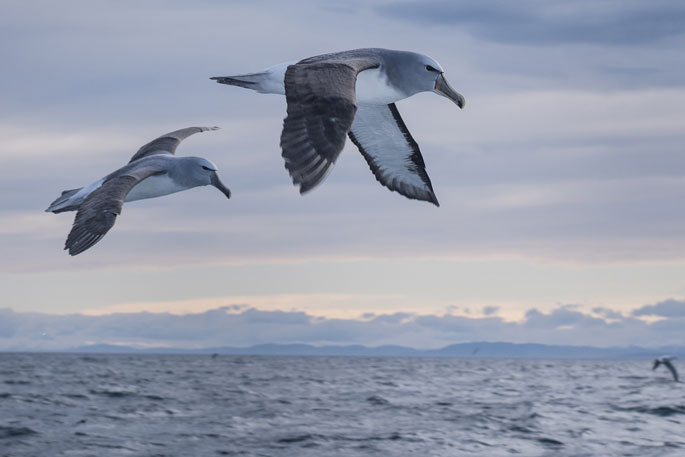A global effort by seabird researchers, including those from NIWA, has resulted in the first assessment of where the world's most threatened seabirds spend their time.
The movements of almost 6000 seabirds, collected from tagging data from around the world, have been collated to find out how much time albatrosses and large petrels spend on the high seas, outside the jurisdiction of any single country.
Albatrosses and their close relatives, the large petrels, are among the world's most-threatened animals, with over half of the species at risk of extinction.
About 168 seabird taxa have been recorded in New Zealand waters, many of which breed nowhere else.
In fact, New Zealand hosts the largest number of breeding species of seabirds anywhere in the world, including 25 species of albatrosses and large petrels.
This new research, published in Science Advances, shows the birds spend almost 40 per cent of their time on the high seas which the authors say highlights the need for international co-operation to ensure their survival.
NIWA seabird ecologist Dr David Thompson says while seabird tracking research has not been carried out for all albatrosses and large petrels in New Zealand, we know that several species also spend time in Chile and Peru, in Japan and the USA in the north Pacific Ocean, while others visit Namibia and South Africa.
"For some species we simply don't know."
Martin Beal, the Portugal-based lead author of the research, described albatrosses as "the ultimate globetrotters".
"However, this incredible lifestyle makes them vulnerable to threats in places where legal protection is inadequate," says Martin.
The researchers tracked the movements of 5775 individual birds belonging to 39 species using miniature electronic tags.
The tracked birds were tagged at 87 breeding sites in 17 countries.
The results showed that all species regularly cross into the waters of other countries, meaning that no single nation can adequately ensure their conservation.
Furthermore, all species depended on the high seas, which are areas of international waters covering half of the world's oceans and a third of the earth's surface.
The researchers revealed the extent to which seabirds connect countries to one another, as well as to the high seas.
The study comes as the United Nations is discussing a global treaty for the conservation and sustainable use of biodiversity in international waters.

Albatross spend 40 per cent of their time on the high seas. Photo: Rebekah Parsons-King.
"Our study unequivocally shows that albatrosses and large petrels need reliable protection that extends beyond the borders of any single country," says Martin.
While at sea, albatrosses and large petrels face a number of threats, primarily from interactions with commercial fishing vessels and pollution.
Dr David Thompson says hundreds of seabirds are killed in New Zealand waters each year - caught on longlines or in trawl nets near to the surface.
However, he says that New Zealand is "ahead of the game" in attempting to quantify the risk to all New Zealand seabird species from commercial fishing. This means that decisions can be made that target resources in order to produce the best conservation outcomes for seabirds.
David says he hopes the research will highlight how little control countries have over seabirds when they are using the high seas.
"A very large proportion of seabird tracking researchers globally were involved in this work, which has quantified for the first time the extent to which albatrosses and large petrels use Exclusive Economic Zones of different countries and the high seas.
"It's hugely important because now we have a comprehensive international framework that allows different countries to collaborate on the conservation issues facing this group of seabirds, and for all countries that have breeding populations of these species to take collective responsibility for their conservation in the high seas. This type of research could not have been produced any other way,” says David.



0 comments
Leave a Comment
You must be logged in to make a comment.